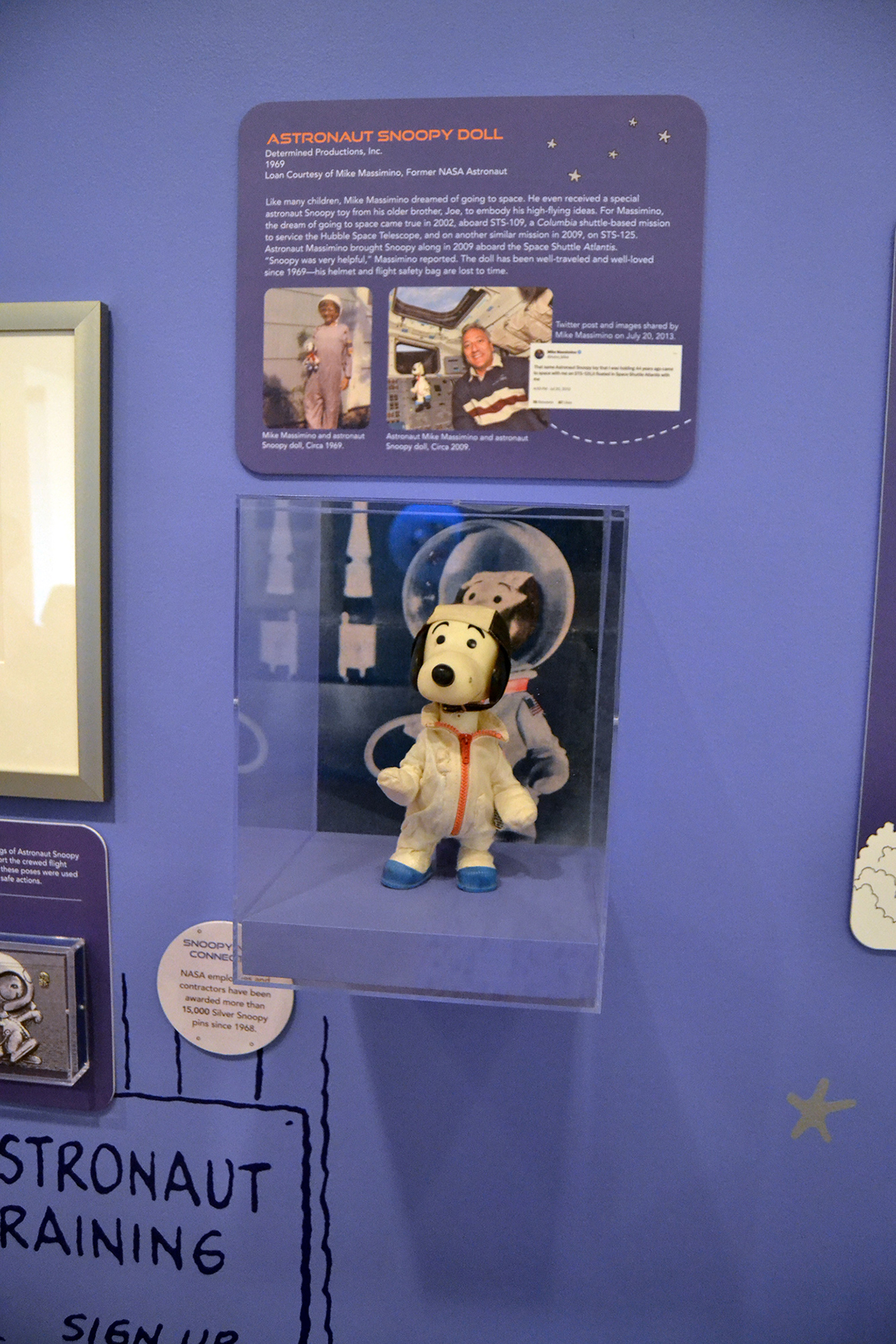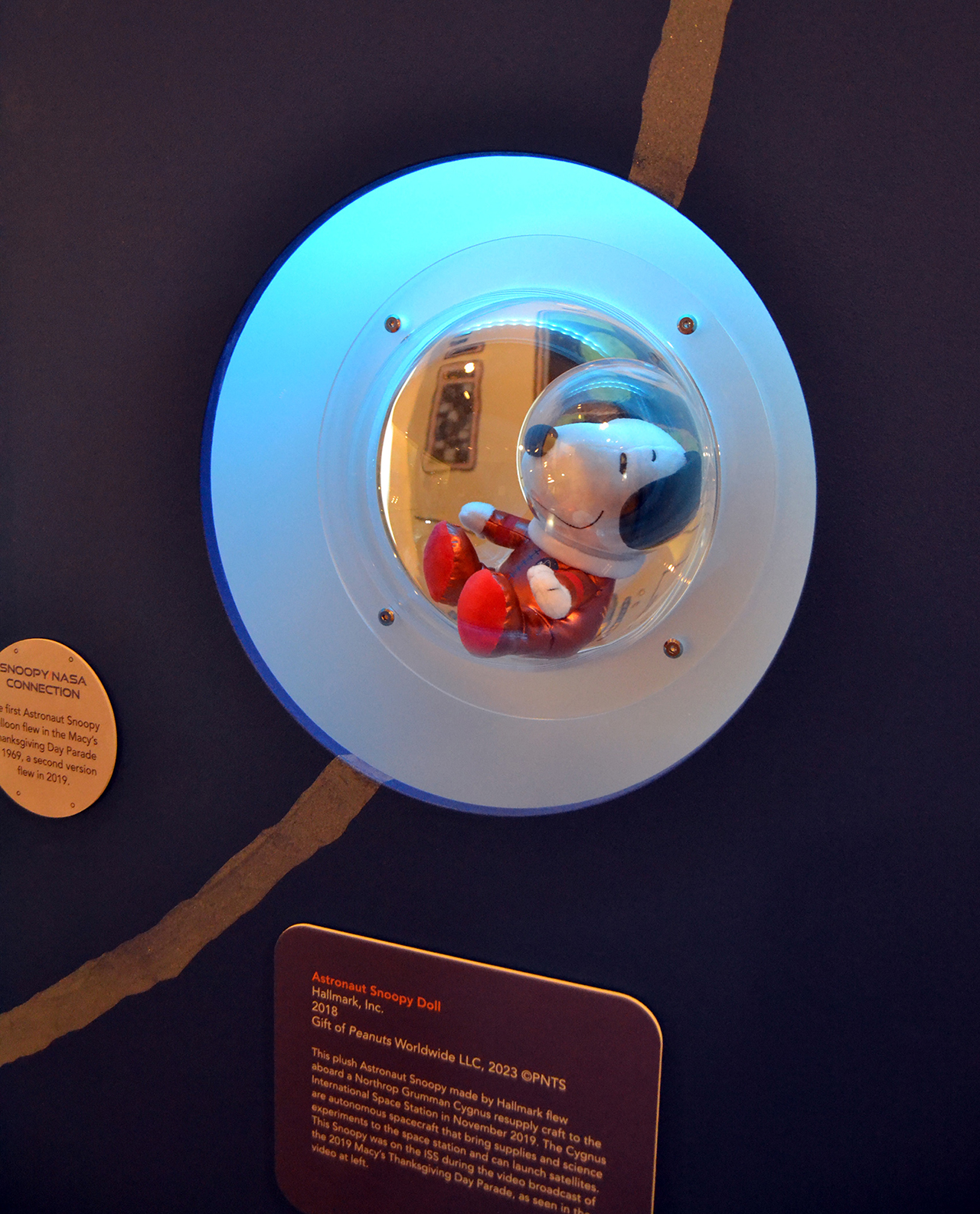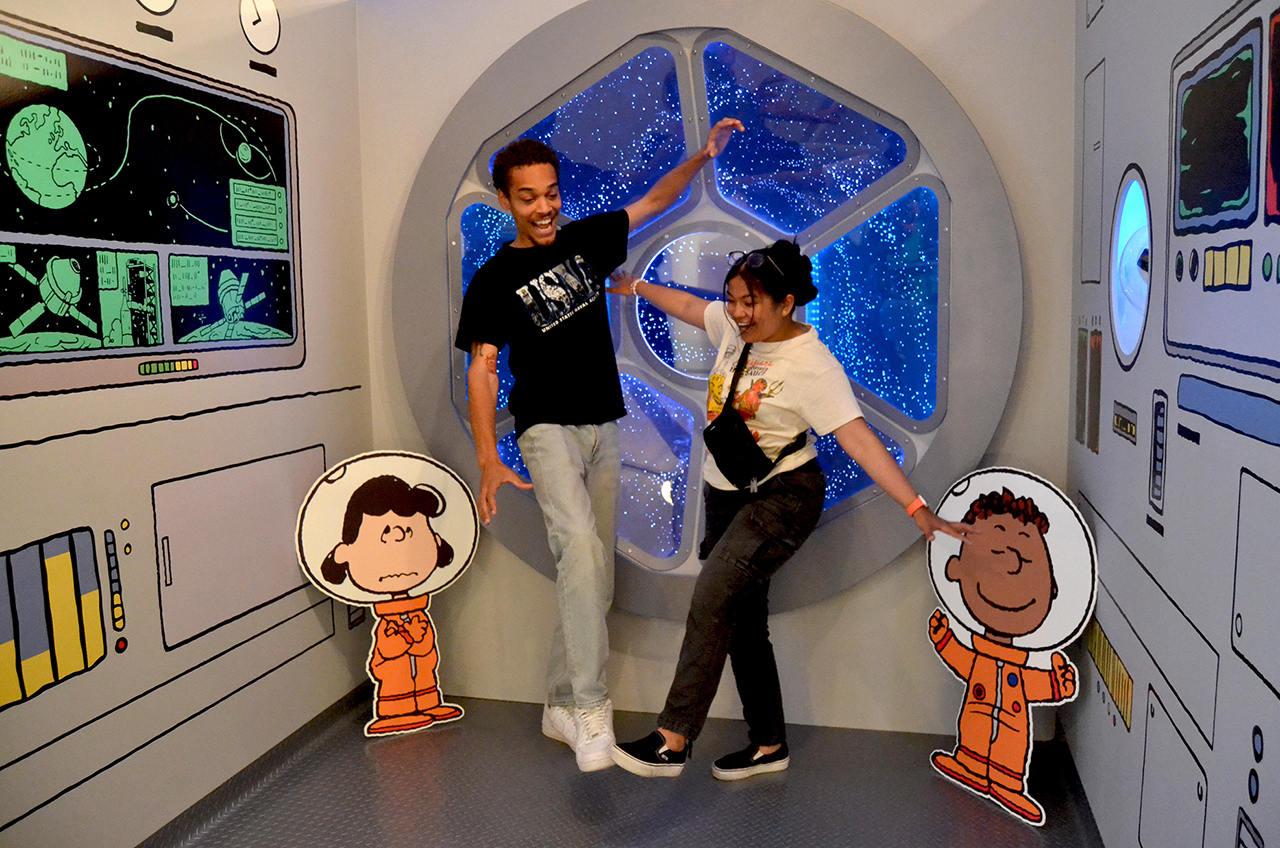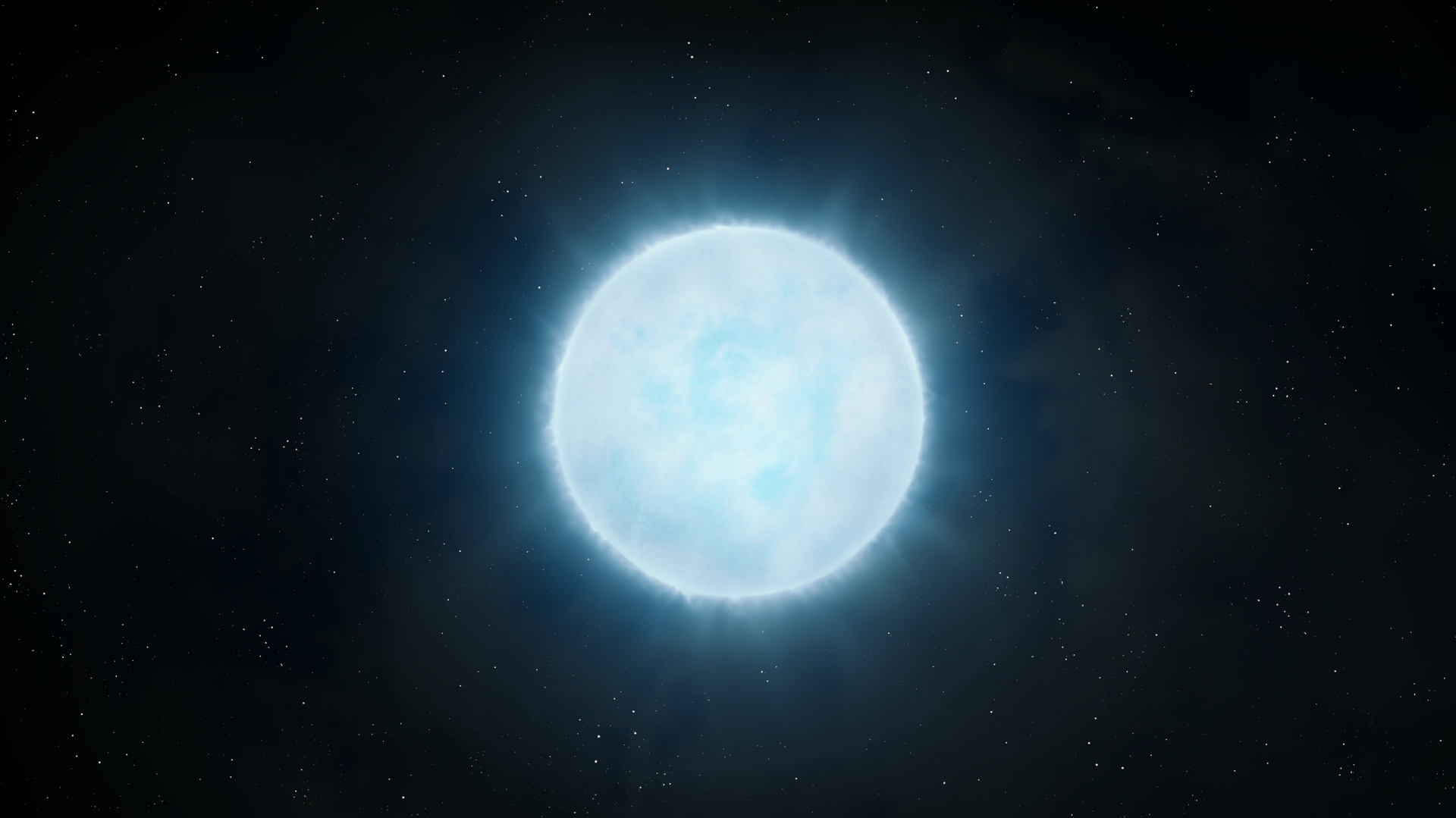Space-flown Snoopy dolls star in new Schulz Museum exhibit
"Snoopy in Orbit," now open at the Charles M. Schulz Museum in Santa Rosa, California, runs through Jan. 14, 2024.
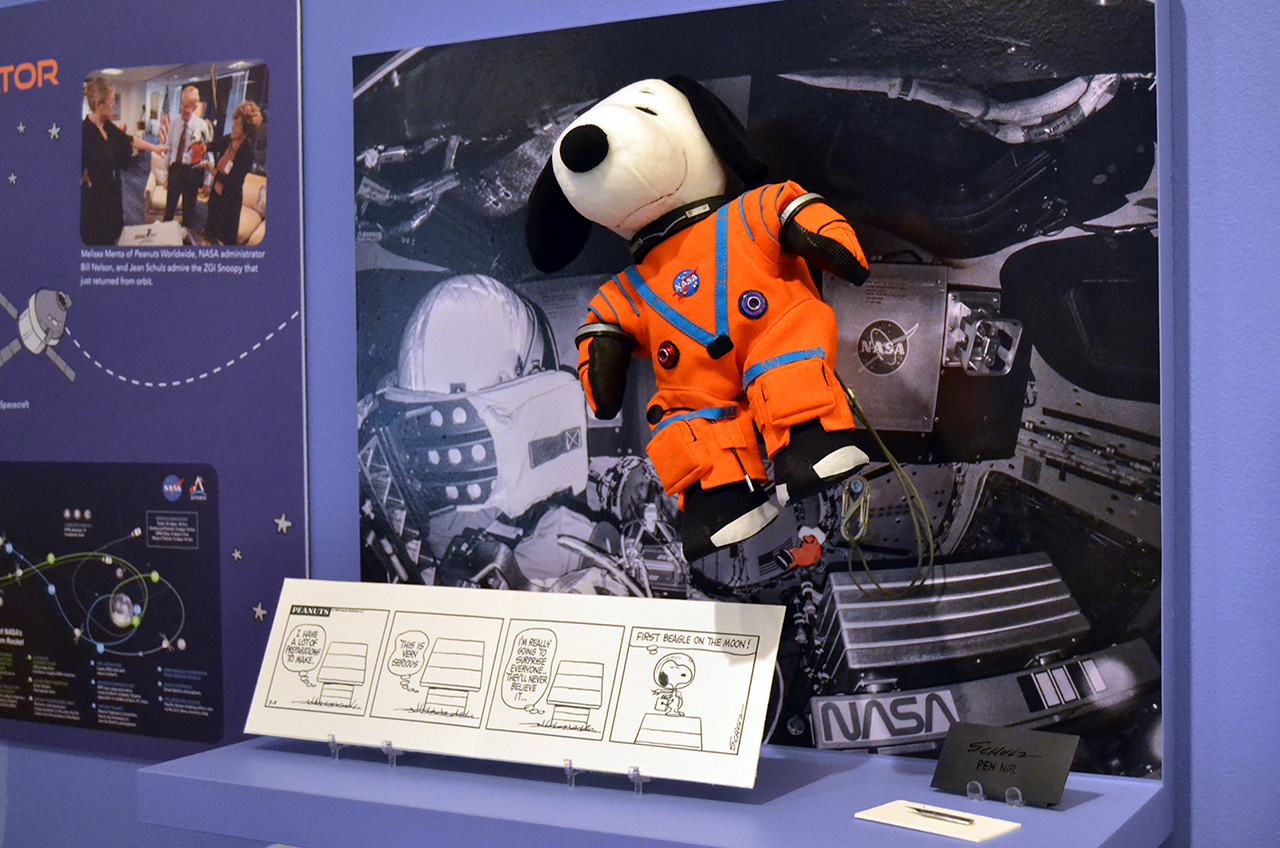
What could be better than the first opportunity to see a Snoopy doll that flew into space? How about the chance to see three such dolls, including one that recently returned from a trip around the moon?
On Thursday (July 13), the Charles M. Schulz Museum in Santa Rosa, California opened "Snoopy in Orbit," a new temporary exhibit featuring never-before-shown space-flown "Peanuts" comic strip artifacts.
"These are really the keystone objects for sharing the story of the ongoing relationship between NASA and Charles Schulz and 'Peanuts,'" said Benjamin Clark, curator of the Charles M. Schulz Museum and Research Center, in an interview with collectSPACE.com.
The three Snoopy dolls on exhibit flew on three different missions. The oldest, made in 1969, began as Mike Massimino's personal boyhood toy. Forty years later, after he became a NASA astronaut, Massimino took his Snoopy with him on board the space shuttle Atlantis for the last mission to service the Hubble Space Telescope.
Massimino has loaned his Snoopy to the museum for this display.
Related: NASA's Hubble Space Telescope servicing missions in pictures
"Snoopy on Orbit" also includes a small plush doll that flew to the International Space Station (ISS) aboard a Northrop Grumman Cygnus cargo spacecraft in 2019. The spacesuited Snoopy was displayed by Expedition 61 crewmates Jessica Meir and Christina Koch in a video from the space station as part of that year's Macy's Thanksgiving Day Parade, which also debuted a giant balloon of Snoopy dressed as a NASA astronaut.
The exhibit's third Snoopy is its most traveled. The plush doll flew as the "zero-g indicator" (or ZGI) on NASA's Artemis 1 Orion capsule on the first flight around the moon by a human-rated spacecraft in more than 50 years. The custom-made doll floated around the cabin during the 25-day mission while traveling 1.3 million miles (2.1 million kilometers) in late 2022.
"For the most recent Artemis ZGI, we have video of how it was made because it's so different from from the preceding ones. The Snoopys that have been into space before were all commercially available Snoopy plush, but this one is very special. It was created with materials approved by NASA using things they use for crewed flights. So it is really fascinating to learn more about how it was made," said Clark.
In addition to the flown dolls, the museum is also showing for the first time a pen nib that was used by Schulz and a replica of a comic strip that he drew that also flew on the Artemis 1 mission to the moon and back.
"We also have some original art by Charles Schulz, including one of his earliest drawings of Snoopy, the astronaut," Clark said. "And we also have original animation cells from a space-related animation project from the 1980s ["The NASA Space Station" from "This Is America, Charlie Brown"].
Rounding out the artifacts in the exhibit are the NASA "Silver Snoopy" award presented to Schulz in 1968 and the agency's Exceptional Public Achievement Medal that was bestowed to Jeannie Schulz in April of this year in recognition of her role in extending the legacy and vision of her late husband by building upon the partnership between Peanuts Worldwide and NASA.
Before leaving the gallery, visitors will also be able to "enter" the world of Snoopy and space.
"We have an interactive component as well, where we have made a 'Peanuts' version of the ISS where visitors can stand in it and take pictures and have a little fun," Clark told collectSPACE.
Established in 2002, the Charles M. Schulz Museum preserves, displays and interprets Schulz's art, including the popular "Peanuts" comic strip he created in 1950. In 1968, after a fire on a launch pad claimed the lives of three astronauts, Schulz agreed to loan Snoopy to NASA to use as a safety mascot. A year later, "Snoopy" and "Charlie Brown" flew to the moon as the crew-chosen call signs for the Apollo 10 spacecraft.
In 2018, 18 years after Schulz's death, Peanuts Worldwide entered a new agreement with NASA to extend Snoopy and the other Peanuts gang characters' use to help promote STEM (science, technology, engineering and mathematics) education and public awareness of NASA's deep space missions.
"Snoopy in Orbit," which is open through Jan. 14, 2024, is the museum's second exhibition devoted the history of Schulz' work with the U.S. space program. "To the Moon: Snoopy Soars with NASA," which debuted in 2009, has now been adapted into a traveling exhibit currently on display at the Reading Public Museum in Pennsylvania.
A companion panel discussion, "3-2-1! Snoopy and the Schulz Museum in Orbit," featuring Massimino, NASA Artemis 1 launch director Charlie Blackwell-Thompson and Melissa Menta, senior vice president of marketing and communications for Peanuts Worldwide, is scheduled for Aug. 5 at the Charles M. Schulz Museum.
Click through to collectSPACE to see more photos from inside "Snoopy in Orbit," the new exhibit now open at the Charles M. Schulz Museum.
Follow collectSPACE.com on Facebook and on Twitter at @collectSPACE. Copyright 2023 collectSPACE.com. All rights reserved.
Breaking space news, the latest updates on rocket launches, skywatching events and more!

Robert Pearlman is a space historian, journalist and the founder and editor of collectSPACE.com, a daily news publication and community devoted to space history with a particular focus on how and where space exploration intersects with pop culture. Pearlman is also a contributing writer for Space.com and co-author of "Space Stations: The Art, Science, and Reality of Working in Space” published by Smithsonian Books in 2018.
In 2009, he was inducted into the U.S. Space Camp Hall of Fame in Huntsville, Alabama. In 2021, he was honored by the American Astronautical Society with the Ordway Award for Sustained Excellence in Spaceflight History. In 2023, the National Space Club Florida Committee recognized Pearlman with the Kolcum News and Communications Award for excellence in telling the space story along the Space Coast and throughout the world.

